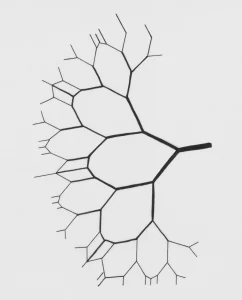Abstract
BACKGROUND:
Psilocybin has shown promise as a treatment for depression but its therapeutic mechanisms are not properly understood. In contrast to the presumed actions of antidepressants, we recently found increased amygdala responsiveness to fearful faces one day after open-label treatment with psilocybin (25 mg) in 19 patients with treatment-resistant depression, which correlated with treatment efficacy.
AIMS:
Aiming to further unravel the therapeutic mechanisms of psilocybin, the present study extends this basic activation analysis. We hypothesised changed amygdala functional connectivity, more precisely decreased amygdala-ventromedial prefrontal cortex functional connectivity, during face processing after treatment with psilocybin.
METHODS:
Psychophysiological interaction analyses were conducted on functional magnetic resonance imaging data from a classic face/emotion perception task, with the bilateral amygdala and ventromedial prefrontal cortex time-series as physiological regressors. Average parameter estimates (beta weights) of significant clusters were correlated with clinical outcomes at one week.
RESULTS:
Results showed decreased ventromedial prefrontal cortex-right amygdala functional connectivity during face processing post- (versus pre-) treatment; this decrease was associated with levels of rumination at one week. This effect was driven by connectivity changes in response to fearful and neutral (but not happy) faces. Independent whole-brain analyses also revealed a post-treatment increase in functional connectivity between the amygdala and ventromedial prefrontal cortex to occipital-parietal cortices during face processing.
CONCLUSION:
These results are consistent with the idea that psilocybin therapy revives emotional responsiveness on a neural and psychological level, which may be a key treatment mechanism for psychedelic therapy. Future larger placebo-controlled studies are needed to examine the replicability of the current findings.
Mertens, L. J., Wall, M. B., Roseman, L., Demetriou, L., Nutt, D. J., & Carhart-Harris, R. L. (2020). Therapeutic mechanisms of psilocybin: Changes in amygdala and prefrontal functional connectivity during emotional processing after psilocybin for treatment-resistant depression. Journal of Psychopharmacology, 10.1177/0269881119895520
Link to full text












